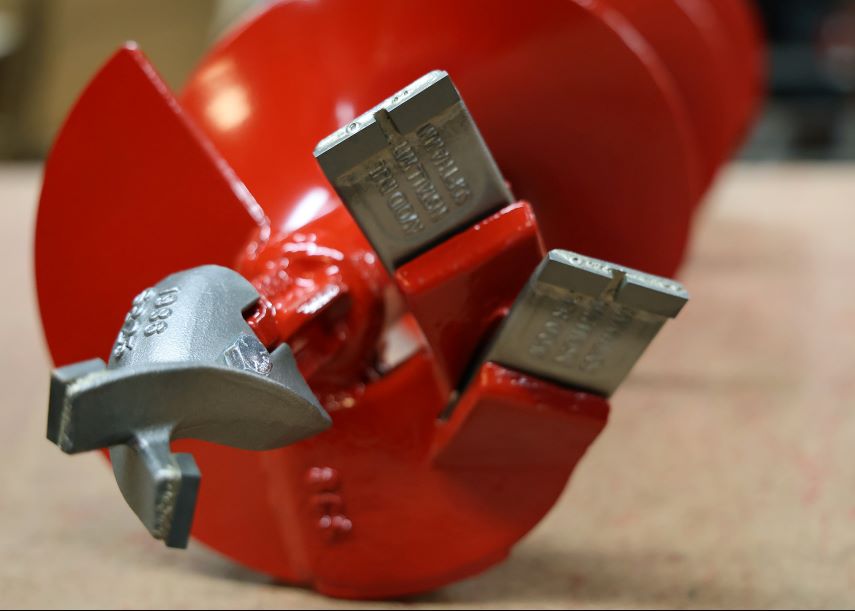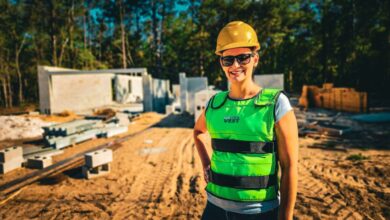Dig into Different Soil

By Joe Haynes
Choosing the right points and blades for an earth auger may seem like a small detail, but it’s a critical step in any project. The right choice increases productivity by lessening equipment wear and decreasing maintenance needs. Outfitting an auger with the proper points and blades makes drilling easier and protects the auger flighting from excessive wear.
To make sure each project goes on without a hitch, choose the best points and blades for each soil type.
Loamy soil and dirt
Loamy soil is a generally soft mixture of sand, silt and a small amount of clay. For this and other soft-ground projects, look for points and blades constructed with cold-rolled steel and hard surfacing around the edges.
Points and blades with bolt-on connections allow operators to easily switch out the points and blades when soil conditions change or maintenance is needed. This increases versatility and decreases project downtime. The bolt-on connection makes reversing the blade simple and a sharp edge is used throughout the project.
Abrasive and dense soil
Some soil types are harder to drill into than others. Abrasive soils, compacted soil and loose rock require stronger points and blades to lead the auger. For these, some manufacturers use carbide, a stronger alternative to steel.
Contractors should pair carbide tip points with hardfaced blades, carbide blades or chisel points with a carbide blade for abrasive soils and soil where impact is possible. A carbide tip point and a chisel point with a carbide blade are optimal for compacted rock. Contractors facing hard pan and frozen soils will find best results with a carbide tip point and a carbide tip blade.
Compacted rock and hard pan soils
Points and blades like hardfaced blades, carbide blades or chisel points make drilling through rock and hard pan soil easier. Look for points and blades that are poured and molded as opposed to welded metals. A single poured component is stronger than a welded one and better for harder soils.
Keep in mind that these points and blades are often paired with a specialty auger, so pay attention to any additional equipment needed. Some manufacturers have multiple blade attachments for their specialty augers, especially those used in heavy-duty applications. An auger with multiple blades chews up the soil more and breaks it down more thoroughly, making it more effective for drilling through harder soils.
Most heavy-duty augers, points and blades also need to be run at lower rpm than their counterparts for the most effective drilling. Check gear ratios and speed recommendations before starting projects with compacted rock and hard pan soil, especially when using specialty equipment.
Keep points and blades on hand
Some projects require digging through multiple soil types. In these types of situations, or when you want to move between projects more easily, it’s sometimes easier to keep both the standard and carbide points and blades on hand. In situations where the soil changes mid-project, switching to a more appropriate point and blade helps prolong the work life of both the blade and auger.
The key to choosing the best points and blades for a specific auger is to double check these parts are the right type and size. The width of a point or blade is based on the size of the auger to which it is attached. For example, a 4-inch blade won’t fit on a 10-inch-diameter auger and vice versa. Choosing the right points and blades for each project doesn’t just rely on knowing the soil conditions but knowing the type of auger that will be used, as well.
Points and blades aren’t just another piece of equipment to cross off the checklist. To make sure projects succeed, work with an earth drill manufacturer to choose the best points and blades for any soil type.
Joe Haynes is president of Little Beaver, a manufacturer of drilling equipment, as well as a complete offering of accessories, including augers, extensions, points and blades. For more information, visit www.littlebeaver.com


